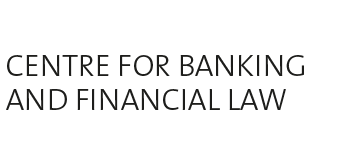IOSCO
A report explaining DeFi and its risks

Vaïk Müller
(Translated by DeepL)
On March 24, 2022, the International Organization of Securities Commissions (IOSCO) published a report on decentralized finance (DeFi). This report aims to present and analyze the functioning of DeFi in terms of technology, products and services, and key participants, while taking into account various risks. The report, although relatively succinct, is relatively dense. This commentary is limited to some of the salient points.
Between questions and recognition
The main objective of DeFi, recognized by IOSCO in its report, is to eliminate intermediaries and enable peer-to-peer transactions. This disintermediation offers an alternative to traditional finance, which generally relies on centralized infrastructures. However, one might well ask whether DeFi’s tools and services aren’t ultimately replacing one form of intermediation with another. Be that as it may, the report notes the success and undeniable growth of DeFi. In this respect, the total locked value of the DeFi industry is currently estimated by some at USD 229.58 billion as at April 4, 2022.
The report questions the possibility of applying existing rules to participants and activities conducted in a decentralized environment. It points out that the world of DeFi is not a watertight one, and that many products or services presented as “decentralized” are in fact controlled by a limited number of users, notably through governance tokens which confer on their holders economic and/or social rights over future modifications to certain characteristics of a protocol.
Products and services
The report focuses on the increase in the use of derivatives facilitated by the use of smart contracts and the possibility of creating synthetic exposures whose value derives from reference assets (real or virtual) or the occurrence of an event (e.g. the hacking of a protocol). The report contains a detailed analysis of lending protocols, while recognizing the innovative nature of certain mechanisms, such as flash loans, in terms of risk reduction. Trading services are also analyzed, as are insurance protocols, which the report considers to be derivatives rather than genuine insurance.
Key participants
The report identifies the following main players : (i) protocol creators and developers, (ii) DAOs (decentralized autonomous organizations) and (iii) investors. The report contains a comparison with the investment process in traditional finance, and notes with regard to DAOs that while their long-term implementation may reduce centralization, the initial organization and fundraising by a DAO still, in principle, involves centralized players.
Main risks
IOSCO is concerned about the elimination of intermediaries, who act as gatekeepers and lend legitimacy to operations. According to IOSCO, the disappearance of intermediaries, particularly in the areas of advice, information and liquidity control, as well as in the fight against money laundering and the financing of terrorism, poses major risks for investors and markets, particularly if this disappearance is not adequately compensated for.
According to IOSCO, the disintermediation induced by DeFi poses the following risks : (i) information asymmetry and fraud, (ii) front-running risk (the slowness of blockchains being a factor increasing this risk), (iii) the risk of illegal activities, in particular with regard to AMLA and circumvention of sanctions, (iv) operational risks and security breaches (hacking, loss of private keys, etc.), and (v) risk of fraud. ), and (v) governance risk, i.e. the risk of conflicts of interest and lack of transparency in the exercise of voting rights, making DeFi protocols vulnerable to hostile takeovers or insider trading.
Another concrete risk highlighted by the report is the risk of “side effects” on markets resulting from the growing interconnection between DeFi and traditional finance. FINMA has already taken account of this risk, and of measures to reduce it, particularly in the field of asset management. Finally, the report contains a detailed analysis of the impact that the stablecoins often used in DeFi can have on reference assets (e.g. fiat currencies, commodities and other financial instruments). The IOSCO report thus raises questions about the systemic nature of the risk posed by DeFi and crypotactives, in particular stablecoins.
Conclusion
While the report presents DeFi in a rather pedagogical way, it does not offer any solutions on how to regulate this nascent industry. Nevertheless, the report is a good summary of the DeFi universe and the risks posed by this ecosystem. The production of this report and the setting up of a DeFi task force by IOSCO underline the interest shown by supervisory authorities. This interest should also be understood by players as the beginnings of a regulatory process that has already begun to take shape, particularly abroad, and of which MiCA is a first foretaste.



